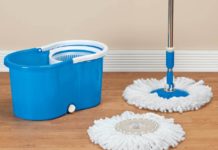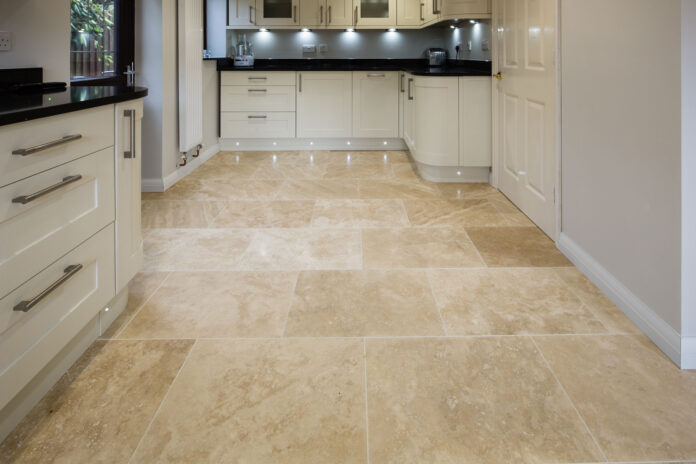
Homeowners and developers are always watching out for the best building materials that will suit their needs.
Travertine is an excellent choice for the bathroom and kitchen counters, floors, and exterior of any building. The stone comes in colors varying from creamy white, tan, and earthy browns to copper, making it very accommodating to every style. You can get legit travertine products from reputable dealers. Here are some tips on how to keep this attractive stone great.
Table of Contents
General Cleaning

These are the standard procedures in the care and maintenance of travertine stone. The routine is easy to follow and will go a long way in giving more life to your surfaces. Remove any loose dirt, dust, or scrap with a chemical-free dry dust mop or soft towel from the travertine floor. Avoid a vacuum cleaner, especially for models with a plastic beat bar, as they can damage the floor and leave little rock and scratches behind.
Use warm water mixture and a pH-neutral, natural stone cleaner for more extensive cleaning. Follow the cleanser packaging instructions when operating with a regular or microfiber mop in the travertine. When done, rinse the floor thoroughly with a wet mop. Prevent stone residues that cause stains and residues by rinsing travertine. Finish up with different sandpaper or towel to clear the residual fluid from the travertine.
Staining
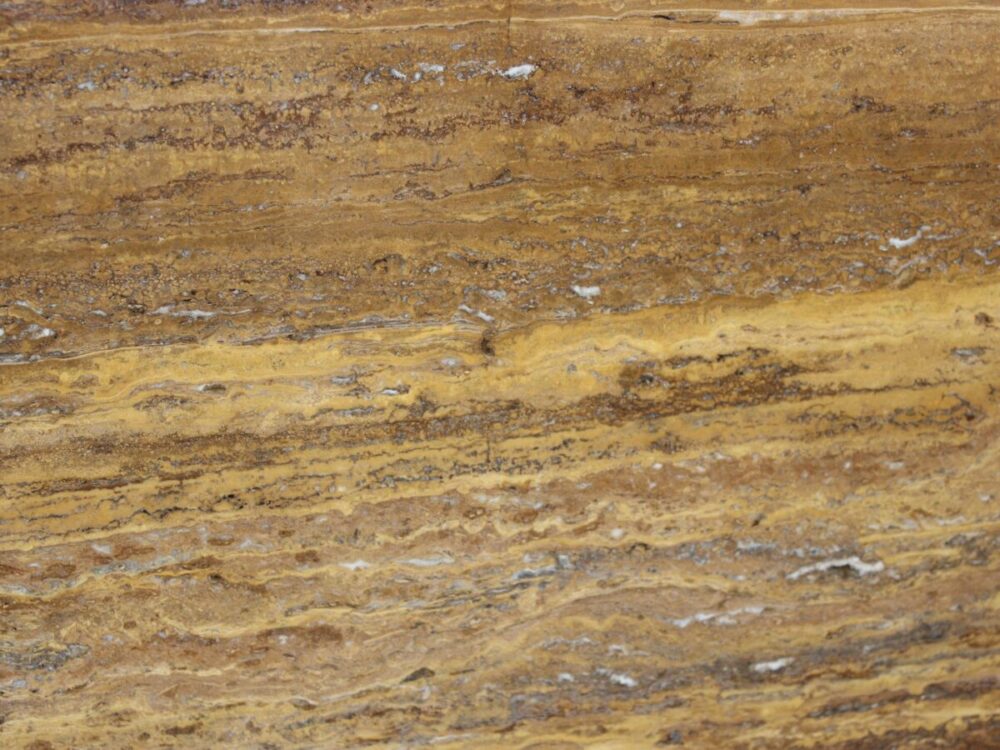
Travertine is a porous natural material that allows liquids and other materials to reach the surface and leave undesired spots and flecks behind. Clear stains by dabbing travertine surfaces with mild or pH-neutral cleaner. Use a product specially for the material and follow package instructions for travertine stain removal in the affected region. Stop acidic or ammonia, vinegar, or bleach products, which can degrade or discolor travertine regularly.
Etching
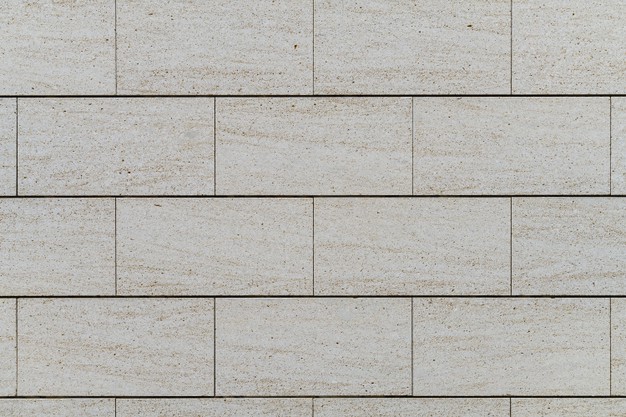
Etching occurs as the stone is penetrated and corroded by acidic substances. Acids can be absorbed in the infected regions of the stone. Drinks like wine, vinegar, coffee, or some cleansers are acidic, and you should wipe them off immediately they come in contact with the surfaces. Etching produces white stains and spots.
Grime accumulation: with pitted travertine, this is likely. Even with proper maintenance, small cracks and pits are deposited on the surface. Mineral deposits, anywhere with hard water, there white and scaly stains are more natural.
Deep cleaning and polishing depending on the degree of the damage. Professionals do these procedures to restore the travertine surfaces to their original condition. Remove the scars, scratches, and stains with an industrial machine through honing to restore the floors.
Holes and Voids
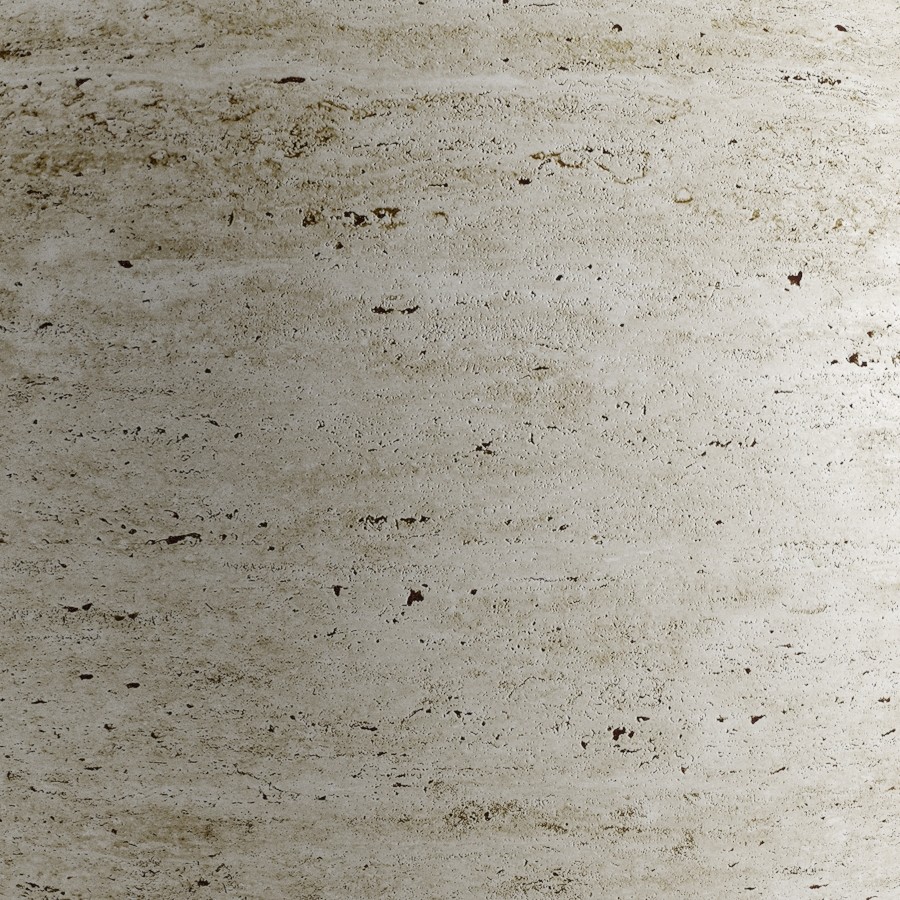
Travertine is composed of organic calcite compounds and can develop holes over time in its natural state. You can fill them with either an epoxy filler or grout to prevent the holes from widening or accumulating waste. Epoxy fillers fit the factory mounted travertine fillers with their smooth texture better. They work well with fit the lighter beige tiles with color.
You can still use beige filler for darker walnut versions, but you will need to add the colored paint to mix the darker tile better. If you use root as your option filler, only the sanded form can be used because it offers more strength so that the areas do not crack or breakaway. The grout sand gives the filled area a texture that does not exactly fit the tiles’ smooth surface but is the most straightforward and most effortless process.
Put a fresh travertine coat and sealer in bathrooms and kitchens consistently. Perform a water test on travertine counters to determine whether a sealer is required. Place drops of water about three centimeters in diameter on different points, then leave it for 30 minutes. When you see any dark marks or ring, that’s an indication that you need to place a new seal. Not every sealer is the same; get the best quality.
The Right Cleaner
Travertine is a form of Silestone, hence soluble in hyper acidic conditions. Popular household cleaners, the form used in kitchens and bathrooms for the regular cleaning of ceramics and artificial surfaces, contain chemicals proving corrosive to the travertine.
Use Soft Cloths and Scrubs Pads

Microfiber material is perfect for cleaning travertine countertops, dressing, and polishing. Scrub pads are great for removing materials that remain on the surface. You can use materials like a scrub sponge on travertine and other natural stones.
Things to Avoid When Handling Travertine

Do not use generic cleaning items purchased from the shop. Cleaning travertine with products that contain acids, alkalis, and other chemicals purchased from your local store may harm the surface of the tile or countertop, the density, or make the denture. Since the damage does not happen immediately, the long term repair of the damage will cost you a lot in the long term.
Don’t use travertine washing with vinegar, ammonia, lemon, or peach. As mentioned above, only agents are a sponge with warm water and a stone cleaner.
Don’t use a generic cleaner. The powders and even the creams are made from abrasives that scrape the surface. For travertine cleaning, use only specially formulated products recommended by stone experts.
Avoid sitting or standing on your countertops. Compared to laminate countertops, travertine countertops are not versatile and do not have a splashback. When subjected to heavyweight, the surface can split.
Do not place toiletries directly on your counter surface. The surface may be stained or ruined by hair products, toothpaste, perfumes, nails, creams, band lotions, and potions. The finishing may leave a dumb spot or ring. By putting these items on a decorative tray, you secure your countertop as you do in fancy hotels.
Conclusion
Travertine requires consistent and good maintenance practices that are easy to follow. The routine helps to maintain travertine surfaces by keeping them clean and in good shape. With many cons selling fake stones, it is crucial to get original products for the best results. Contact legit natural stone dealers like Saturnia Travertine for travertine products.



